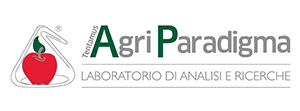Origin of the alert
The first ethylene oxide alert was published on 09-09- 2020 by Belgium on the RASFF – Rapid Alert System for Food and Feed website, concerning sesame seeds in which ethylene oxide was found in a concentration of 30.1 ± 8.7 mg/kg – ppm – with the threshold being 0.05 mg/ kg – ppm.
The first alert issued by Italy was dated 20-10-2020. From then until April 2022, more than 900 alerts have been reported on the RASFF portal concerning the presence of ethylene oxide in foodstuffs.
Ethylene oxide can be found in high concentrations in sesame seeds and in other products such as rice, nuts, pulses, cereals, spices, fruit and vegetables, seeds, coffee, guar gum (E412), and in locust bean gum (E410). All these products are from non-EU countries, in particular the situation of foodstuffs from India is quite alarming. In India Ethylene oxide is commonly used to disinfect and sterilise foodstuffs; this practice is especially common with foodstuffs that are exported to Europe in order to prevent
food products from spoiling during transport, mainly by sea, which may take several weeks and/or months.
Concerning foodstuffs and by-products, the law establishes a Maximum Residue Level set out in Regulation (EU) 2015/868 within the range 0.02-0.10 mg/kg range depending on the type of product, while the threshold for additives can be found in Regulation 231 of 2012 – which sets out the specifications for food additives listed in Annexes II and III of Regulation (EC) No. 1333/2008 of the European Parliament and of the Council.


